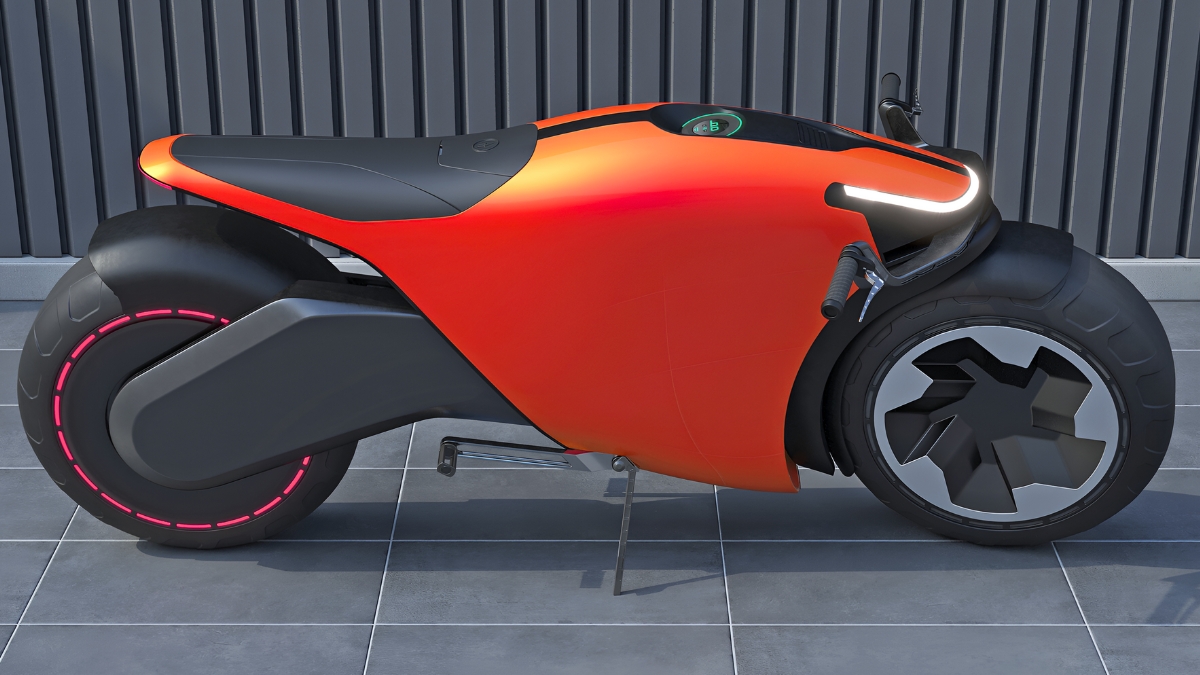Futuristic vehicle design is about pushing boundaries, blending creativity, technology, and engineering to create something that feels ahead of its time. From aerodynamic frames to fully electric powertrains, the automotive world is rapidly evolving. Among the most exciting innovations are hubless wheels and forward-shifted long wheelbases, two features that completely redefine how vehicles look and perform.
These elements aren’t just for show they improve handling, stability, and aesthetics. More importantly, they represent a new design philosophy that focuses on form meeting function in the most visually striking way.
What Exactly Are Hubless Wheels – Explained Simply
Hubless wheels, also known as centerless wheels, eliminate the traditional wheel hub and spokes. Instead of a central axle, the outer rim rotates around a fixed inner ring using bearings. This gives the illusion of a floating wheel, creating a futuristic and minimalistic look.
Beyond aesthetics, hubless wheels can reduce unsprung weight and open new possibilities for aerodynamics and internal components. You’ll often see them in concept bikes, electric supercars, and high-end prototypes like the Arc Vector motorcycle or Lexus concept vehicles, where innovation and style go hand in hand.
How Hubless Wheels Work – Understanding the Mechanism
So how do hubless wheels actually function? It’s all about clever engineering. The inner stationary ring remains fixed to the suspension system, while the outer rim rotates on bearings powered by electric motors or chains located at the edge. This setup removes the need for a central hub and allows for a cleaner, more compact design.
While they look futuristic, hubless wheels are complex to engineer. They require precise balancing and high-strength materials to handle real-world road stress. That’s why, for now, they’re mostly used in limited-edition vehicles or prototypes rather than everyday cars.
What Is a Forward-Shifted Long Wheelbase and Why It’s Used
The wheelbase of a vehicle is the distance between the front and rear wheels, and shifting it forward changes everything about how the vehicle looks and handles. A forward-shifted long wheelbase means that more of the vehicle’s body mass is moved toward the front, giving it a sleek, stretched appearance.
This design improves stability at high speeds and offers a smoother ride by distributing weight more evenly. It also gives designers more room for battery placement in electric vehicles, helping improve efficiency and center of gravity. Many futuristic EVs, such as the Mercedes Vision AVTR and Faraday Future FF 91, use this technique for both aesthetics and performance.
| Feature | Traditional Wheelbase | Forward-Shifted Long Wheelbase |
|---|---|---|
| Look | Balanced, compact | Sleek, elongated |
| Ride Stability | Standard | High-speed stability improved |
| Battery Placement (EVs) | Central | Front/Lower optimized |
| Design Appeal | Conventional | Futuristic and dynamic |
How Hubless Wheels and Long Wheelbase Work Together
When combined, hubless wheels and a forward-shifted long wheelbase create a design that feels straight out of the future. The hubless wheels make the vehicle appear as if it’s floating, while the long wheelbase gives it a powerful, aerodynamic stance. Together, they produce a sense of motion even when standing still a key design goal for modern concept vehicles.
These designs are not just about style they help improve airflow, reduce drag, and enhance road comfort. For electric vehicles, this translates to better range, performance, and visual appeal.
What They Are Doing Differently in Modern Concepts
Automakers and designers are reimagining how vehicles should look in the electric era. The focus has shifted from internal combustion efficiency to design freedom, since electric drivetrains require less space. Hubless wheels, modular chassis, and long wheelbases are part of that creative freedom.
Brands like Curtiss Motorcycles, Arc, Lamborghini, and Tesla’s design labs have already started experimenting with these futuristic forms. It’s not just about standing out it’s about signaling a transition to the next generation of transport design.
What Is the Future of Hubless Wheel and Long Wheelbase Technology
The future looks promising but challenging. Hubless wheels will likely become more common in premium electric vehicles and motorcycles, especially as manufacturing materials and precision engineering improve. Likewise, long wheelbase layouts will dominate electric sedans and performance EVs, offering both aesthetic beauty and enhanced functionality.
As 3D printing, carbon fiber, and smart composite materials evolve, these designs will move from concept shows to real roads. Within the next decade, it’s likely we’ll see production-ready hubless vehicles with forward-shifted wheelbases as a standard design trait in high-end models.
Conclusion
The combination of hubless wheels and a forward-shifted long wheelbase represents the perfect balance of art, science, and innovation. These futuristic design elements not only make vehicles look revolutionary but also contribute to better performance, aerodynamics, and stability.
As technology continues to evolve, what once seemed like a sci-fi fantasy is slowly becoming a real-world possibility. The future of automotive design is already here — and it’s sleek, smart, and truly stunning.
FAQs
What are hubless wheels used for?
Hubless wheels are mainly used in futuristic motorcycles and concept cars to improve aerodynamics and create a cutting-edge design aesthetic.
Why is a long wheelbase beneficial?
A long wheelbase offers better stability, smoother rides, and improved handling, especially at high speeds.
How do hubless wheels work?
They use bearings around the rim instead of a central hub, allowing the outer ring to rotate while the inner section remains fixed.
Can hubless wheels be used in normal vehicles?
Currently, they are mostly found in prototypes due to high production costs and complex engineering, but future materials may make them more common.
